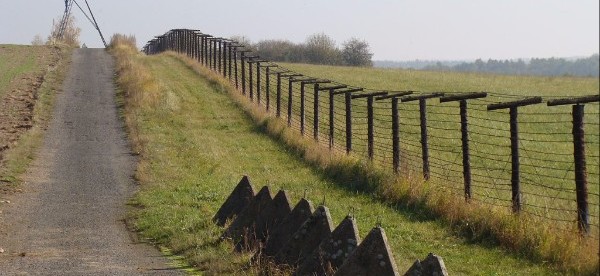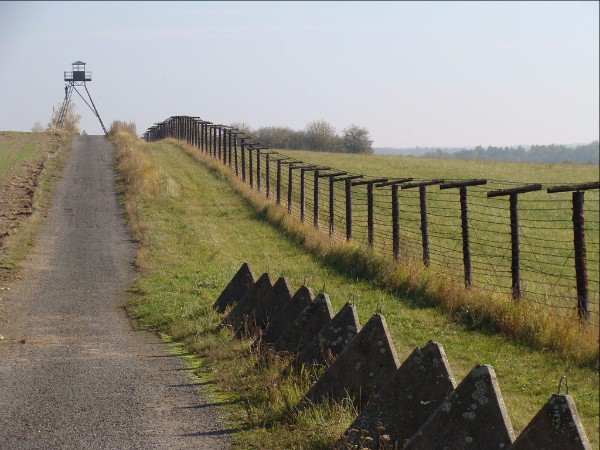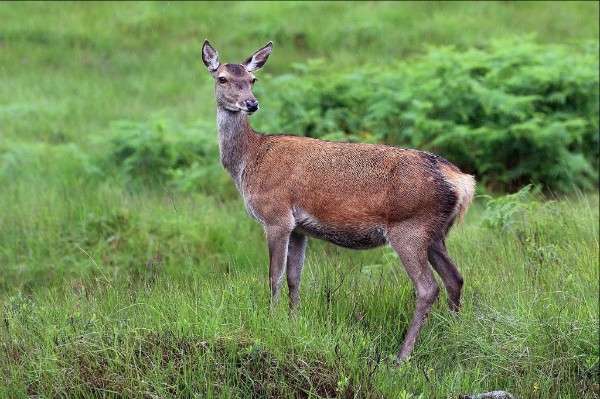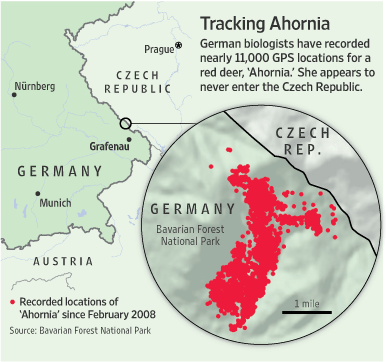The Thin Red Deer Line

On November 9, 1989, the Berlin Wall began to fall, as thousands of East German citizens poured into West Berlin. The images and videos are, perhaps, the most visible example of the collapse of the symbolic border known as the Iron Curtain which separated Soviet-controlled Eastern Europe from the rest of the continent. But it wasn’t the only physical border from the Cold War. If you were in what was Czechoslovak at the time, your nation was similarly cut off from the West — the borders between your country and West Germany/Austria were demarcated by fences and watchtowers, like the preserved ones seen below.

Most of those fences are gone, and in their place is the opposite — the successor entities of Czechoslovakia (the Czech Republic and Slovakia) have joined with Germany, Austria, and a bunch of other countries in adopting the Schengen Agreement, allowing for the free movement of people throughout the region. In other words, the Iron Curtain no longer prevents anyone from crossing borders.
Unless you’re a red deer.

Red deer are indigenous to Europe and, generally speaking, aren’t really interested in the geopolitical climate of their habitats. The Cold War was no exception, except for that Czech border fence, and even then, the deer’s concern was more practical than ideologicial. The fence — electrified, topped with barbed wire, and patrolled by armed guards — not only kept Soviet dissidents from fleeing to the west, but it also separated the red deer in the area into different herds. There was simply no way for a red deer in West Germany to make its way to Czechoslovakia, or vice versa.
But that was a long time ago, especially if you’re a deer — they only live about ten or so years in the wild. There are few, if any, who are old enough to have lived through the Cold War. Most of the fences are gone, too, so there’s really nothing keeping West German and Czech deer from visiting one another.
Yet, the deer won’t cross the line.
In 2009, the Wall Street Journal reported on an animal tracking project in Germany’s Bavarian National Park. The park borders the Czech Republic and there’s no fence there dividing the two nations. But the deer don’t seem to care: they respect the historical borders:
In the seven years since wildlife biologists began tracking the deer, only two, a German stag named Florian and a Czech stag incongruously called Izabel, have crossed the border to stay. Lately, some young males have begun to explore the pastures on the other side, but they always come back. Females don’t set foot in the once-forbidden area.
“In the past, the deer didn’t go to the Czech side because of the fence,” says Marco Heurich, a wildlife biologist who runs the animal tracking project in the Bavarian Forest National Park in Germany. “Now the fence is gone but they still stop at the border.”
For example, again via the WSJ, here’s the tracking map of Ahornia, a doe born in 2007. She doesn’t cross the border.

The reason isn’t entirely clear — it isn’t like one can simply ask a deer what it won’t cross an invisible line — but the scientific community has some guesses. Pavel Sustr, a researcher on the project, told the Guardian that “fawns follow mothers for the first year of their life and learn from them where to go.” As a result, per the Guardian, “animals stuck to traditional life patterns, returning every year to the same places.” Basically — they don’t cross the line because they were never taught to, and they’re not ones to try new things otherwise.
Or maybe they’re still upset about Communism.
Bonus fact: In the 1940s, the United States Army fenced off a munitions storage and disposal depot in Seneca County, New York (about an hour’s drive southeast of Rochester). In doing so, the Army accidentally created a wildlife preserve, protecting a herd of white-tailed deer, some of whom have white coats. (Here’s a picture of some of the white deer.) The very visible deer — they don’t blend in with their surroundings except perhaps during a blizzard — were shielded from hunters and natural predators alike. As a result, their population grew; according to Wikipedia, an estimated 300 white deer live in the area today, the largest known group of white deer anywhere. However, that may change soon, in a bad way: the depot was decommissioned in the 1990s and the Army Corps of Engineers will stop maintaining it at the end of this year. (There are some efforts by community organizations to save the deer.)
From the Archives: Barbed Bells: An interesting way to use a system of fences.
Take the Quiz: The Iron Curtain pathway is now a long-distance cycling route known as the Iron Curtain Trail. Can you name the 21 countries it runs through?
Related: A piece of the Berlin Wall, yours for about $30.
